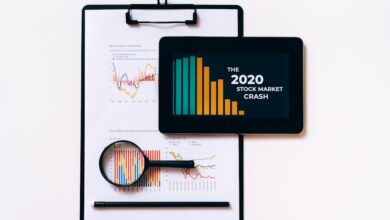Weathering the Storm: Understanding Economic Recessions and Strategies for Resilience

As the global economy navigates an ever-changing landscape, the specter of recession looms large, prompting both individuals and businesses to reconsider their financial strategies. Understanding the early warning signs of an economic downturn is crucial for anticipating its impact and mitigating potential losses. From shifts in consumer behavior to the ripple effects on global trade and supply chains, recessions can profoundly affect various sectors in unpredictable ways. This article explores the telltale indicators that signal an impending recession, examines how different industries are impacted, and discusses effective investment strategies that can thrive even in challenging times. Additionally, we will delve into the pivotal role of government stimulus in cushioning the blow of economic downturns and reflect on valuable lessons learned from past recessions that remain relevant today. By equipping ourselves with knowledge and strategies, businesses and investors can better prepare for and navigate the complexities of recessionary periods, ultimately enhancing their resilience in the face of economic uncertainty.
- 1. Recognizing the Red Flags: Early Warning Signs of an Economic Recession
- 2. Navigating the Downturn: Sector-Specific Impacts and Investment Strategies
1. Recognizing the Red Flags: Early Warning Signs of an Economic Recession
Recognizing early warning signs of an economic recession is crucial for businesses, investors, and policymakers to take preemptive measures. Several key indicators can signal an impending downturn.
One of the most commonly monitored signs is a decline in consumer confidence. When consumers feel uncertain about their financial futures, they tend to reduce spending, leading to decreased demand for goods and services. This drop in consumer spending can be reflected in retail sales data, which may show a consistent downward trend.
Another significant indicator is the performance of the stock market. A sustained decline in stock prices can suggest that investors are losing confidence in corporate earnings and overall economic stability. Additionally, an inverted yield curve—where short-term interest rates exceed long-term rates—has historically been a reliable predictor of recessions, signaling that investors expect slower growth in the future.
Rising unemployment rates also serve as a critical red flag. As companies begin to cut costs in anticipation of lower demand, layoffs may increase, leading to higher unemployment. This can further exacerbate consumer spending, creating a negative feedback loop.
Furthermore, decreasing manufacturing activity can indicate an economic slowdown. Metrics such as the Purchasing Managers' Index (PMI) can help gauge the health of the manufacturing sector. A PMI reading below 50 suggests contraction, which can be a precursor to broader economic challenges.
Lastly, fluctuations in housing market indicators, such as falling home sales and declining housing starts, can signal trouble ahead. The housing market is often a bellwether for the economy, as it reflects consumer sentiment and spending capabilities.
Recognizing these red flags can provide valuable insights for stakeholders to navigate the complexities of an approaching recession effectively. By staying vigilant and informed, they can implement strategies to mitigate risks and adapt to changing economic conditions.
Economic recessions are characterized by a significant decline in economic activity, and their early warning signs can often be identified through various indicators. These include rising unemployment rates, decreased consumer spending, declining business investments, and a slowdown in manufacturing output. Monitoring these trends can provide valuable insights into potential economic downturns.
Recessions impact different sectors of the economy in unique ways. For instance, the consumer discretionary sector, which includes retail and entertainment, typically suffers as households tighten their budgets. Conversely, essential services such as utilities and healthcare may experience less volatility, as demand for these services remains relatively stable regardless of economic conditions. Additionally, industries reliant on exports may be adversely affected by decreased global demand, while those involved in lower-cost goods may find opportunities to thrive.
Investing during a recession requires a strategic approach. Investors often shift their focus toward defensive stocks—companies that provide essential goods and services and tend to perform better during downturns. Bonds and other fixed-income securities may become more attractive due to their relative stability compared to equities. Diversification remains a key strategy, as it can help mitigate risk across different asset classes.
Government stimulus plays a crucial role in mitigating the effects of recessions. By implementing fiscal policies such as increased public spending, tax cuts, and monetary policies like lowering interest rates, governments aim to boost consumer confidence and stimulate economic growth. These measures can help prevent deeper recessions and accelerate recovery by providing financial support to businesses and households.
Consumer behavior often shifts during economic downturns, with individuals becoming more cautious about spending. This shift can lead to a focus on saving and prioritizing essential purchases over luxury items. As a result, businesses may need to adapt their marketing strategies and product offerings to align with changing consumer preferences.
Global trade and supply chains are also significantly impacted during recessions. Economic slowdowns can lead to reduced demand for imports and exports, disrupting established supply chains and causing delays in production and delivery. Companies may need to reevaluate their supply chain strategies, considering factors such as localization and diversification to enhance resilience.
Learning from past recessions can provide valuable insights for navigating future downturns. Historical patterns often reveal that proactive measures—such as maintaining healthy cash reserves, closely monitoring economic indicators, and being adaptable—are essential for businesses looking to weather economic storms.
To prepare for and survive a recession, businesses should focus on strengthening their financial foundations. This includes managing debt levels, optimizing operational efficiencies, and investing in technology that can enhance productivity. Furthermore, fostering strong relationships with customers and suppliers can provide a competitive edge during challenging times. By staying informed and agile, businesses can not only survive a recession but potentially emerge stronger on the other side.
2. Navigating the Downturn: Sector-Specific Impacts and Investment Strategies
Economic recessions create a ripple effect across various sectors, each responding differently to the downturn. Understanding these impacts is crucial for investors looking to navigate through challenging economic times.
The **consumer discretionary sector** often feels the brunt of a recession, as consumers tighten their belts and prioritize essential goods over luxury items. Retailers, restaurants, and travel companies typically experience a significant drop in demand. Investors may want to consider shifting their focus to **consumer staples**, which include essential products like food and household items. These companies often exhibit resilience during downturns due to their steady demand.
The **financial services sector** can also be affected, with increased loan defaults and a tightening of credit. This can lead to lower profitability for banks and financial institutions. Investors might find opportunities in well-capitalized banks or firms that provide value-added services, such as financial advisory, which may see sustained demand even in tough times.
In contrast, the **healthcare sector** tends to be more stable during recessions. Regardless of economic conditions, healthcare needs persist, making it a defensible investment choice. Companies involved in pharmaceuticals, biotechnology, and essential medical services often show resilience and can even thrive during downturns.
The **technology sector** presents a mixed bag. While consumer spending on tech gadgets may decline, demand for software and services that improve efficiency or reduce costs can remain strong. Investors might focus on companies that provide essential IT services or cloud-based solutions, as these are increasingly important for businesses looking to streamline operations.
**Real estate** is another sector that can experience significant impacts during a recession. Housing markets may cool, and commercial real estate can suffer from increased vacancies. However, real estate investment trusts (REITs) focused on essential services, such as healthcare facilities or data centers, may continue to perform well.
Investors should also consider **diversification** as a key strategy during a recession. Allocating assets across various sectors can help mitigate risks associated with downturns. Additionally, focusing on companies with strong balance sheets, low debt levels, and consistent cash flow can provide more security.
Ultimately, navigating the sector-specific impacts of a recession requires careful analysis and strategic investment choices. By understanding how different sectors respond to economic downturns, investors can position themselves to weather the storm and potentially capitalize on opportunities that arise in turbulent times.
In conclusion, understanding the multifaceted dynamics of economic recessions is crucial for both individuals and businesses alike. Recognizing early warning signs can empower stakeholders to make informed decisions, while awareness of sector-specific impacts allows for strategic investment choices that may mitigate losses. Government stimulus plays a vital role in cushioning the blow of economic downturns, helping to stabilize markets and support consumer spending. As consumer behavior shifts during a recession, businesses must adapt their strategies to meet changing demands and preferences.
Additionally, the interconnectedness of global trade and supply chains underscores the importance of resilience and flexibility in modern economies. The lessons learned from past recessions provide valuable insights that remain relevant today, equipping us with the knowledge to better navigate future challenges. By proactively preparing for economic downturns and implementing effective survival strategies, businesses can not only endure recessions but also emerge stronger. As we look ahead, fostering a culture of adaptability and foresight will be essential in overcoming the inevitable cycles of economic fluctuation.





